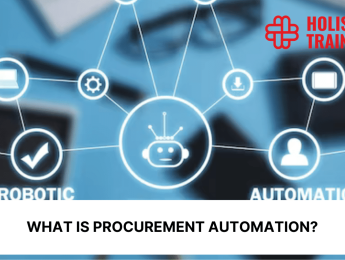- Table of Contents
- Introduction
- What is Purchasing Power Parity (PPP)?
- Calculating Purchasing Power Parity: The Formula
- Why is Purchasing Power Parity (PPP) Important?
- 1. Accurate Measurement of Living Standards and Economic Well-Being
- 2. Eliminating Exchange Rate Fluctuations from Economic Comparisons
- 3. Comparing Real Income and Wages Across Countries
- 4. Aiding International Aid and Development Policies
- 5. Guiding Global Investment and Business Decisions
- 6. Benchmark for Long-Term Exchange Rate Trends
- 7. Standardising Global Comparisons of Economic Performance
- 8. Correcting Misinterpretations in Trade Balances
- 9. Helping Governments Design Policy
- How to Use Purchasing Power Parity
- 1. Comparing Economic Performance Between Countries
- 2. Cross-Border Salary and Wage Comparisons
- 3. Making More Accurate International Price Comparisons
- 4. Informing International Aid and Development Programs
- 5. Guiding Currency Valuation and Forex Analysis
- 6. Analysing Inflation and Price Stability
- 7. Tracking Global Investment Opportunities
- 8. Comparing Costs of Living for International Expats
- The Relation Between PPP and GDP
- Limitations of Purchasing Power Parity
- Different consumption patterns:
- Non-tradable goods:
- Market imperfections:
- Short-term volatility:
- PPP and Financial Markets
- Purchasing Power Parity Indices
- OECD Comparative Price Level Index:
- The Big Mac Index:
- The KFC Index:
- Conclusion
Introduction
The world of economics is filled with concepts that help us make sense of the complexities of international markets. One such concept is Purchasing Power Parity (PPP), a powerful tool for comparing the economic productivity and living standards between different countries. As nations become more interconnected through globalisation, understanding how their currencies relate to each other becomes critical for investors, economists, and policymakers. This blog post delves deep into the Purchasing Power Parity (PPP) concept, explaining its purpose, importance, and how it is calculated. We will also explore its relationship with Gross Domestic Product (GDP), its limitations, and its impact on financial markets like Forex. Additionally, the blog will examine various purchasing power parity indices, including the famous Big Mac Index.
What is Purchasing Power Parity (PPP)?
Purchasing Power Parity (PPP) is an economic theory that compares the relative value of two currencies by determining the amount of a specific basket of goods and services that can be purchased in each country. In simpler terms, PPP measures how much money is needed to buy the same products in different nations, helping economists and financial experts assess the cost of living, inflation, and currency values.
The idea behind PPP is that, in an ideal world, exchange rates between two currencies should equalise the prices of identical goods and services across countries. For example, if a cup of coffee costs $5 in the United States and £3 in the United Kingdom, PPP suggests adjusting the exchange rate to reflect this price difference. If it doesn’t, it indicates that one currency may be over- or undervalued compared to the other.
Several groups rely on PPP for their analyses and decision-making processes. These include:
- International organisations like the World Bank, the International Monetary Fund (IMF), and the Organisation for Economic Cooperation and Development (OECD) use PPP to compare countries' economic performance and living standards.
- Economists and researchers who study inflation, productivity, and cost-of-living differences across regions.
- Investors and multinational corporations must understand exchange rate fluctuations and price differences when conducting cross-border investments or business operations.
Calculating Purchasing Power Parity: The Formula
While the theory of PPP is conceptually simple, its calculation involves several layers. The most basic formula to determine PPP between two currencies is:
PPP= P1P2
Where:
- P1 is the price of a particular basket of goods in the first country, and
- P2 is the price of the same basket of goods in the second country.
Let’s consider an example to clarify this. Suppose a basket of goods costs $200 in the United States and €150 in Germany. To calculate the PPP exchange rate between the US dollar (USD) and the Euro (EUR), we would use the formula:
PPP= 200150=1.33
This suggests that the PPP exchange rate between USD and EUR is 1.33, meaning that, according to PPP, $1.33 should equal €1. If the actual exchange rate differs from this figure, it indicates that one currency may be under or overvalued relative to the other.
Why is it Important?
Purchasing Power Parity (PPP) plays a pivotal role in international economics, offering insights into the dynamics of global markets, cross-border trade, and currency valuation. It holds particular importance because it facilitates the comparison of economic conditions across different countries in a more standardised way. By adjusting for differences in price levels, PPP provides a clearer understanding of a country’s economic health and living standards. There are several key reasons why PPP is considered a critical economic tool:
1. Accurate Measurement of Living Standards and Economic Well-Being
One of the most important uses of PPP is its ability to adjust for the varying living costs between countries. Standard nominal GDP measurements often fall short in reflecting the actual economic well-being of a population because they rely on exchange rates that can fluctuate due to market sentiment or geopolitical events. This makes cross-country comparisons challenging, as a high GDP in one country might not correspond to a higher standard of living due to differences in price levels.
PPP allows economists to compare living standards more accurately by equalising the cost of a fixed basket of goods across countries. For instance, a country like India may have a lower nominal GDP compared to the United States, but once price levels are adjusted using PPP, the real purchasing power of India’s citizens might appear much higher than suggested by nominal GDP figures. PPP therefore helps policymakers and international organisations make more equitable assessments when determining economic assistance, development policies, or global ranking systems.
2. Eliminating Exchange Rate Fluctuations from Economic Comparisons
Numerous factors beyond the fundamental value of goods and services, including interest rates, speculation, political instability, and central bank policies, influence exchange rates. This volatility can distort comparisons of economic performance across nations. Using PPP, which ignores short-term fluctuations and focuses on long-term equilibrium, economists can compare countries on a more level playing field.
For example, if a country’s currency suddenly depreciates due to political unrest, it might become cheaper in exports and more competitive globally. However, this would not necessarily reflect an increase in the nation's real economic output or productivity. PPP adjusts for these short-term disturbances and provides a clearer sense of the underlying economy without being influenced by currency market turbulence.
3. Comparing Real Income and Wages Across Countries
Another critical role of PPP is adjusting income and wage data for cross-country comparisons. Salaries or income levels can often be misleading when taken at face value, especially between countries with vastly different living costs. PPP adjusts for these differences, allowing for a more realistic comparison of what workers in different countries can actually afford with their income.
For instance, a worker in Switzerland might earn a higher nominal salary than a worker in Brazil. However, after adjusting for the cost of living through PPP, the relative purchasing power of both workers might be more similar than initially apparent. This makes PPP an essential tool for multinational companies that need to compare wages across their international operations, ensuring that they offer competitive compensation packages that account for local cost-of-living differences.
4. Aiding International Aid and Development Policies
PPP is indispensable for international organisations such as the World Bank, the International Monetary Fund (IMF), and the United Nations. These organisations use PPP-adjusted data to assess poverty levels, allocate financial aid, and determine eligibility for development assistance. For instance, when setting poverty thresholds or assessing a country's economic needs, using nominal exchange rates can lead to misguided decisions. A country with a low nominal GDP might appear to be impoverished, but when adjusted for local price levels using PPP, its real purchasing power and economic conditions might be healthier than they seem.
Conversely, a country with a relatively high nominal GDP but high local prices might still struggle with significant poverty. By relying on PPP-adjusted data, international bodies can more effectively allocate resources and design policies that target the root causes of poverty rather than being misled by the distortions caused by nominal exchange rates.
5. Guiding Global Investment and Business Decisions
Investors and businesses with international operations regularly use PPP to make informed decisions about where to allocate resources, set prices, or expand operations. By comparing the costs of goods, services, and labour in different countries, they can identify undervalued or overvalued markets, helping them to adjust their strategies accordingly.
For example, if a company wants to open a new factory, it would use PPP to compare the cost of land, labour, and materials across several potential countries. Suppose the currency of one country is undervalued according to PPP. In that case, it may indicate that the cost of setting up operations there will be lower in real terms, making it a more attractive option for investment. Similarly, multinational companies often use PPP to set prices for their products in various markets, ensuring they remain competitive while accounting for local purchasing power.
6. Benchmark for Long-Term Exchange Rate Trends
Purchasing Power Parity is not just useful for economists and businesses; it also provides a valuable benchmark for forecasting long-term exchange rate trends. While it doesn't capture short-term currency fluctuations driven by market speculation or geopolitical events, PPP reflects the long-term equilibrium value of exchange rates based on the relative prices of goods and services.
For instance, if the current exchange rate between two currencies significantly differs from their PPP exchange rate, it suggests that one currency is overvalued or undervalued. Over time, economic forces—such as inflation, trade balance changes, and economic growth shifts—tend to push the actual exchange rate closer to the PPP rate. As a result, PPP serves as a guide for economists and currency traders to anticipate future movements in exchange rates.
7. Standardising Global Comparisons of Economic Performance
PPP is critical for comparing national income, productivity, and economic growth on a global scale. Without PPP adjustments, international comparisons can be highly misleading due to the distortions caused by currency fluctuations. This standardisation enables more accurate comparisons of economic performance between countries.
International comparisons of economic indicators such as GDP, household consumption, or health expenditure can become skewed when using market exchange rates. For instance, a developing country with lower wages and prices might appear to have low levels of consumption or output, but when adjusted using PPP, the country’s true economic activity and consumption levels may be much closer to those of more developed nations. This is why PPP-adjusted GDP is often preferred for global economic rankings and comparisons.
8. Correcting Misinterpretations in Trade Balances
Without PPP, trade balances between countries can also be misunderstood. Nominal exchange rates might make the trade between two countries seem more or less balanced than it is in real terms. By adjusting for the actual cost of goods and services through PPP, economists can get a clearer picture of trade imbalances, making evaluating a country's economic health easier.
For example, if a country appears to be running a large trade deficit based on nominal exchange rates, this could lead to a perception that the country is economically weak. However, after adjusting for PPP, the size of that deficit may appear smaller, giving a more accurate reflection of the country's true trade situation.
9. Helping Governments Design Policy
Governments also use PPP to help design and implement economic policies. When setting fiscal policies, inflation targets, or welfare programs, policymakers rely on PPP to better understand the true cost of living within their borders compared to other countries. This helps in the creation of more targeted and effective policies that address local economic conditions without being swayed by external currency movements or global market fluctuations.
PPP provides insight into a country’s global competitiveness in goods and services. This, in turn, influences trade policy, taxation, and investment strategies. Countries can use PPP data to adjust their policies to boost productivity and align with international benchmarks.
In summary, Purchasing Power Parity is an indispensable tool for making meaningful economic comparisons across countries. By adjusting for differences in price levels, PPP allows for more accurate assessments of living standards, real incomes, and economic productivity. It is a guiding principle for international trade, investment, aid distribution, and policy design. From providing a better understanding of global markets to aiding in designing targeted policies, PPP plays a vital role in shaping the global economy.
How to Use Purchasing Power Parity
Purchasing Power Parity (PPP) is a powerful economic tool used to compare economic metrics across different countries by adjusting for variations in price levels. While it may sound complex, economists, businesses, policymakers, and financial analysts frequently employ PPP to gain more accurate insights into the relative value of currencies, economic output, and living standards. Understanding how to use PPP effectively involves knowing when to apply it, what kind of data it yields, and how it impacts decision-making across various sectors.
Here’s a deeper dive into how PPP can be applied in different contexts:
1. Comparing Economic Performance Between Countries
One of the most common uses of PPP is to compare the economic performance of different countries. This comparison often involves measuring GDP, income, or consumption in one country relative to another. Since exchange rates fluctuate and are influenced by factors beyond the price of goods and services, nominal comparisons using these rates can be misleading. By applying PPP, economists adjust for the cost of living and inflation, offering a clearer picture of the real economic health of countries.
To do this, PPP-adjusted GDP is calculated. Imagine comparing India's GDP with the United States using nominal exchange rates. The U.S. GDP would appear significantly higher due to the strength of the U.S. dollar. However, when you adjust for PPP, you factor in that goods and services in India are generally cheaper than in the U.S. This adjusted figure reveals that India’s real GDP is higher than it seems, allowing for a more accurate comparison.
For instance, when comparing countries’ GDP per capita using PPP, richer countries might appear slightly less wealthy, while middle-income or developing countries could look more prosperous. International organisations like the International Monetary Fund (IMF) and the World Bank use PPP-adjusted GDP to rank countries more fairly regarding economic strength.
2. Cross-Border Salary and Wage Comparisons
Purchasing Power Parity (PPP) is essential for businesses, especially multinational companies, to compare salaries and wages across different countries. Simply comparing wage levels using exchange rates is not enough because the cost of living can vary dramatically between nations. By applying PPP, companies can understand the true purchasing power of their employees’ wages and ensure they offer compensation packages that are competitive in local terms.
For example, imagine a company headquartered in Germany that wants to compare the wages of its workers in Brazil and China. Simply converting salaries using nominal exchange rates might make Chinese wages seem lower than Brazilian wages. However, after applying PPP, workers in both countries could turn out to have roughly the same purchasing power, as local goods and services in China may be cheaper. This allows the company to standardise wages to reflect the real economic value of the pay employees receive in their respective countries.
This principle extends to international hiring and talent acquisition. Global companies use PPP to set fair and competitive salaries while ensuring that employees have adequate purchasing power in their home countries. This avoids the common pitfall of underpaying workers in countries with a lower cost of living or overpaying in countries where living costs are much higher than nominal salaries would suggest.
3. Making More Accurate International Price Comparisons
Another practical application of PPP is in making price comparisons for goods and services across countries. Price differentials can be significant between countries, even for identical products. PPP allows businesses, governments, and consumers to account for these differences and make more accurate comparisons. This is particularly useful for companies engaged in global trade, allowing them to set fair prices for their products and services in international markets.
For example, if an electronics company sells smartphones in Japan and Mexico, it wouldn’t make sense to price them purely based on exchange rates. Instead, the company would use PPP to adjust the prices so that the phones are affordable to consumers in each market relative to the local cost of living. This helps companies remain competitive while avoiding pricing that might alienate potential customers in lower-income countries or lead to underpricing in wealthier nations.
PPP-adjusted price comparisons are also valuable for governments and economists who want to assess whether a country’s goods and services are overpriced or underpriced compared to international benchmarks. By analysing these differences, economists can determine whether certain sectors are too expensive or whether a country’s currency is overvalued.
4. Informing International Aid and Development Programs
International organisations and governments use PPP to assess economic conditions in developing countries more accurately. When aid programs are designed, using nominal GDP or income data often skews the true picture of economic hardship, as lower-income countries might appear poorer than they are due to currency exchange rates. By applying PPP, these organisations can get a more realistic understanding of the purchasing power of local populations, ensuring that aid and development funds are allocated effectively.
For instance, an international development organisation might decide how much financial assistance to provide to two countries. If it bases its decision purely on exchange rates, it may give more aid to a country with a weaker currency. However, by using PPP, the organisation can better assess the actual cost of goods and services in each country and distribute funds more equitably based on real purchasing power.
Additionally, PPP sets poverty lines and determines how much income people need to meet their basic needs in different parts of the world. For example, the World Bank’s international poverty line is calculated based on PPP rather than exchange rates, ensuring that it reflects the real purchasing power required to escape extreme poverty in different countries.
5. Guiding Currency Valuation and Forex Analysis
For investors and currency traders, PPP is a key tool in analysing whether a currency is undervalued or overvalued. Over the long term, currencies tend to move toward their PPP exchange rate, meaning that currencies trading far above or below their PPP value may be expected to adjust over time. This helps traders make more informed decisions when entering foreign exchange (forex) markets.
For example, if the nominal exchange rate between the British pound and the U.S. dollar is 1.30, but PPP suggests it should be closer to 1.20, traders might expect the pound to depreciate relative to the dollar over time. Similarly, a currency trading significantly above its PPP-adjusted rate might be seen as overvalued, leading to predictions of eventual depreciation.
By identifying discrepancies between nominal exchange rates and PPP, investors can anticipate long-term currency trends and make strategic decisions in the forex market. Although PPP doesn’t predict short-term exchange rate movements, it provides a benchmark for understanding where currencies may be headed in the long run based on the relative costs of goods and services.
6. Analysing Inflation and Price Stability
PPP can also be used to analyse inflation rates between countries. Since PPP measures the relative price levels of baskets of goods and services, changes in PPP over time can reveal how inflation rates differ across countries. When a country’s prices rise faster than in other countries, its PPP-adjusted exchange rate will shift, indicating higher inflation relative to its trading partners.
Governments and central banks use this data to monitor inflationary trends and adjust monetary policy. By comparing their PPP-adjusted prices to those of other countries, they can determine whether inflation is becoming a problem and take measures to stabilise prices, such as raising interest rates or implementing tighter fiscal policies.
For instance, if a country’s PPP-adjusted exchange rate shows that its currency is becoming overvalued due to rising prices, the central bank might intervene to prevent further inflation and protect its export competitiveness. In this way, PPP provides valuable insights into price stability and economic health.
7. Tracking Global Investment Opportunities
For investors looking to diversify their portfolios across international markets, PPP provides crucial insights into which countries offer the best value for investment. By comparing PPP-adjusted prices and GDP, investors can identify countries where the cost of doing business is relatively low, indicating that those markets may offer better returns on investment.
For example, an investor looking to enter emerging markets might use PPP to compare the cost of land, labour, and materials in different countries. By selecting markets where the local currency is undervalued according to PPP, they can maximise their purchasing power and reduce costs, increasing the potential for higher profits.
Similarly, when investing in stocks or bonds, PPP can provide insights into which markets offer more value. Suppose a country’s currency is undervalued compared to its PPP-adjusted exchange rate. In that case, its financial markets might offer attractive investment opportunities because the undervaluation suggests that assets are relatively cheap in real terms.
8. Comparing Costs of Living for International Expats
For individuals considering a move to a new country, especially expatriates and digital nomads, PPP helps compare the cost of living in different locations. People relocating for work or retirement often need to assess whether their income will be sufficient to maintain their living standards abroad. PPP allows them to compare the prices of goods, services, and housing across countries and make more informed decisions.
For example, a U.S. citizen considering a move to Thailand would use PPP to determine how much their salary will go toward purchasing housing, groceries, transportation, and other essential goods. With this knowledge, they can evaluate whether their income or savings will support their desired lifestyle in their new location.
In summary, PPP is an invaluable tool that can be used across various sectors to enhance decision-making, from comparing economic conditions globally to making better investment choices. It helps governments, businesses, and individuals make more informed decisions by providing a more accurate picture of relative price levels and purchasing power.
The Relation Between PPP and GDP
Purchasing Power Parity is closely linked to a country’s Gross Domestic Product (GDP). When comparing the GDP of the two countries, adjusting for PPP gives a more realistic picture of the actual economic output and living standards.
Nominal GDP uses current market exchange rates, which may not accurately reflect the true value of goods and services due to currency fluctuations. By adjusting GDP figures using PPP, economists can compare countries' economic productivity in real terms, stripping out the distortions caused by volatile exchange rates.
For instance, when measured using market exchange rates, China’s nominal GDP is often smaller than that of the United States. However, when PPP adjustments are applied, China's GDP increases significantly due to the lower cost of living, giving a better indication of the size of its economy relative to the U.S.
Limitations of Purchasing Power Parity
While PPP is an essential tool in economics, it has several limitations:
Different consumption patterns:
The basket of goods used to calculate PPP may not represent consumption habits across all countries. People in different nations buy different types of goods and services, complicating direct comparisons.
Non-tradable goods:
PPP works best for tradable goods like electronics and clothing but struggles with non-tradable items like real estate, which can have vastly different prices in different regions due to local factors.
Market imperfections:
Real-world factors such as taxes, tariffs, and transportation costs can distort prices, meaning that PPP rates don’t always reflect actual market conditions.
Short-term volatility:
While PPP provides a reliable benchmark for long-term exchange rate equilibrium, it doesn’t account for short-term market movements driven by speculation, interest rates, or political instability.
PPP and Financial Markets
PPP has practical implications for financial markets, especially in foreign exchange (Forex) trading and international investment. Investors and Forex traders often use PPP to identify whether a currency is undervalued or overvalued, which can help guide investment strategies.
If a currency is undervalued according to PPP, Forex traders might predict that it will appreciate over time as the market corrects the imbalance. Conversely, an overvalued currency might be expected to weaken. However, it is crucial to note that PPP is a long-term indicator, and traders often rely on other tools to predict short-term currency movements.
PPP also impacts stock markets. For example, companies that operate in multiple countries may adjust their financial reports using PPP to reflect their performance across different regions better. Similarly, when comparing share prices or earnings of companies across different countries, investors may use PPP to normalise the differences in price levels.
Purchasing Power Parity Indices
Several well-known indices use the PPP concept to compare prices between countries. These indices are often used as informal benchmarks to gauge currency valuation and cost-of-living differences.
OECD Comparative Price Level Index:
The OECD publishes a comparative price level index that compares price levels for consumer goods and services across countries, adjusted using PPP. Policymakers use this index to assess inflation and economic competitiveness.
Index | What It Measures | Main Data Source | Usage |
OECD Price Index | Price levels across countries | Government economic data | Official economic comparisons |
Big Mac Index | Cost of a Big Mac worldwide | McDonald's restaurant prices | Currency valuation insights |
KFC Index | Price of a KFC meal worldwide | KFC outlets prices | Informal purchasing power measure |
Table: Comparison of the different PPP indices
The Big Mac Index:
One of the most famous PPP indices is The Economist’s Big Mac Index, which compares the price of a McDonald's Big Mac in different countries to determine whether currencies are over- or undervalued. The Big Mac Index is a light-hearted yet effective way of illustrating PPP, as the Big Mac is a standardised product available globally.
The KFC Index:
Like the Big Mac Index, the KFC Index compares the price of a bucket of fried chicken across different countries. While less formal, this index highlights price disparities and offers insights into how much consumers in various nations must pay for the same product.
Conclusion
Purchasing Power Parity (PPP) is a fundamental economic concept that allows for meaningful comparisons of living standards, currency values, and economic productivity across countries. By accounting for price level differences, PPP provides a clearer picture of the true value of goods and services, enabling more accurate assessments of global economies. While PPP has limitations, it remains an essential tool for policymakers, investors, and international organisations.
Understanding PPP enhances one’s knowledge of economics and offers practical applications in global business, investing, and market analysis. Whether through formal indices like the OECD's Comparative Price Level Index or informal measures like the Big Mac Index, PPP offers valuable insights into the world economy.
To deepen your understanding of global economic dynamics, consider enrolling in our course "Global Macroeconomic Risks & Challenges." This course will equip you with the knowledge to analyse complex economic issues, including purchasing power disparities, currency fluctuations, and their impact on markets. Enhance your skills and stay ahead in navigating today’s global financial landscape. Enrol now!

























